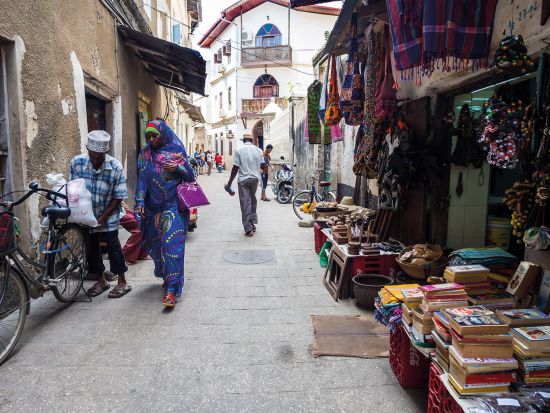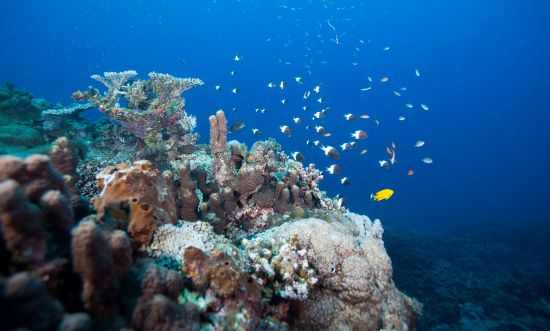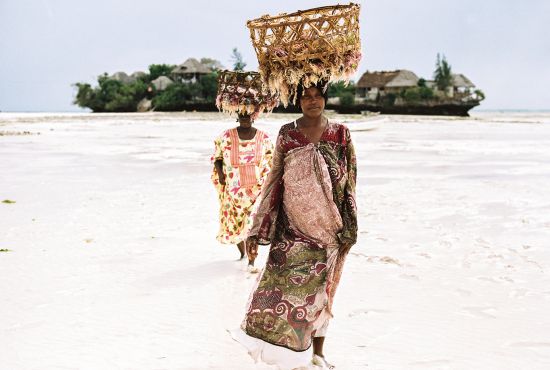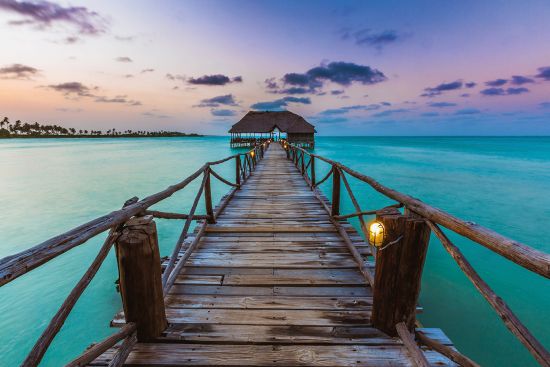
Zanzibar Travel Guide: Top Tips, Things to See and Do
With beautiful beaches, coral reefs and spectacular marine life, the Tanzanian archipelago and childhood home of Freddie Mercury is full of surprises
“This is the finest place I have known in all of Africa”, said David Livingstone. The Victorian explorer was speaking of Zanzibar, the tropical archipelago located off the coast of Tanzania. The past 150 years have brought many changes, with scores of luxury and boutique hotels opening to cater to holidaymakers. But one glimpse of Arabian dhows on the waters of the Indian Ocean will tell you that there is still much to be discovered on a Zanzibar holiday.
With its growing popularity, there are now a few cruise lines offering itineraries to visit the archipelago. A land of fragrant spice plantations, white coral houses and forests teeming with wildlife, Zanzibar offers a relaxed pace of life, but still with plenty to keep you entertained. Here’s our guide to the best things to see and do, and top travel tips.
History of Stone Town
Part of Zanzibar city and a UNESCO-listed site, Zanzibar is a bustling port on the west coast. Getting lost in its winding passageways is all part of the fun. However, if you’re struggling to navigate around the bazaars, minarets and brass-studded, carved doorways, make your way to the Emerson Spice Hotel.
Here, in the rooftop teahouse, you can sit on mosaic-print floor cushions to admire the panoramic ocean views. Look out for the historic Arab Fort, dating back to the 17th century. But not all the local history is old: Stone Town was the birthplace of Freddie Mercury, and Queen fans can see their hero’s childhood home (there’s even a dedicated gift shop and restaurant). As well as Emerson, some of the best hotels in Zanzibar can be found in Stone Town, including Park Hyatt and Zanzibar Serena Hotel.

Spice of Life: Zanzibar Plantations
You can’t come to this island of spice and not visit at least one plantation. Take a bicycle tour (lovezanzibar.com) of working spice farms and you’ll weave round palm trees and coconut trees – another reason to wear your cycle helmet! – where aromas of vanilla, lemongrass, cardamom and cloves perfume the air.
Visiting Pemba Island
Some 30 miles to the north of the main island lies Pemba, a mosaic of lagoons and primeval forests complete with coconut, mango and clove plantations. Dhows still sail from here to Kenya and Mozambique, just as they did centuries ago. After a visit to Pemba Museum – housed in an 18th century Arab fort in the capital, Chake Chake –head over to the ZSTC Clove Oil Distillery, where you can stock up on lemongrass and cinnamon essential oils.
Pemba is ideal for divers, thanks to the Pemba Channel, which shelves off to depths of more than 2,000 metres. The west coast’s rich coral gardens are the best place to encounter brightly-coloured wrasse, sea fans, mantas and patrolling silvertip sharks (6 to 10ft long and highly inquisitive, but not feared by serious scuba folk).
Vumawimbi, north of Pemba’s Ngezi Forest Reserve, is one of East Africa’s longest white sand beaches. And if you’re looking to sleepover, one of the most popular beach resorts is the Underwater Room at the Manta Resort (themantaresort.com).

Best for Wildlife
Love wildlife? Zanzibar is a great cruise destination to discover the animal kingdom. Head south to see hawksbill and green turtles at Menai Bay – a protected area – and bottle-nosed dolphins at Kizimkazi. Or take the 30-minute boat ride from Stone Town to Changuu, once a prison island, now a sanctuary for giant tortoises.
Back on the main island – officially Unguja but informally known just as Zanzibar – make time to visit Jozani Forest Reserve. Follow the 45-minute trail along a mangrove-lined boardwalk and look out for antelopes, Fischer’s turaco birds, bush babies and (if you’re lucky), Africa’s rarest primate, the red colobus monkey.

Zanzibar Cuisine
Zanzibar’s long heritage as a trading post means the local diet is a rich fusion of Arab, Indian and African influences. Try lime-and-ginger samosas or chapati pizza – more like a quiche filled with meat, cheese and spices – usually served with refreshing sugar cane juice.
Zanzibar Beaches
If you like to feel the sand between your toes and to bathe in crystal blue waters, you’ll find there’s a beach for everyone in Zanzibar. Kite-surfers flock to the laidback east-coast towns of Paje and Jambiani, where locals greet you with a cry of jambo! (‘hello’ in Swahili).
The north coast is more traditional: at Matemwe, women still balance baskets of seaweed on their heads, while at Nungwi, skilled shipwrights build dhows, just as they have for generations. You will find plenty of beach hotels here, ranging from luxury to more modest.

Mafia Island: White Beaches, Fishing and Whale Shark Diving
Don’t be put off by the name. Mafia island, 120 miles south of Unguja, is the closest you’ll get to a castaway experience – but with the considerable bonus of shelter and food. This once busy trading base now attracts just a trickle of visitors, drawn by its string of white beaches. With no metalled roads, the way to get around is by 4×4 taxi, tuk-tuk, or pillion lift on a motorbike.
Mafia is the centre of the largest marine protected area in the Indian Ocean – a 317sq mile underwater haven, endowed with 400 species of fish and 48 types of coral. Nurse sharks and rays frequent these waters, and you’ll also find humphead parrotfish, giant batfish, sea anemones, andsoft corals. Just a few hundred metres offshore near Kilindoni Harbour you can snorkel with whale sharks from October to March, while humpback whales migrate here in August.

Travel Tips
Getting Around
Cruise ships dock at the Zanzibar Cruise Port, a 10-minute walk from Stone Town, which is also best explored on foot. Further afield, dala dalas (open-air trucks) offer the cheapest way to get around Zanzibar and Pemba, averaging 1,500 Tanzanian shillings (roughly 50p) a ride. Renting a private driver for the whole day will set you back about £78. Hired bicycles are a good way to navigate Pemba’s smaller towns.
Safety and Entry Requirements
Zanzibar is a safe destination for tourists, but the Tanzania Travel Office does offer recommendations for safety and security. UK passport holders visiting Zanzibar should apply in advance for an e-visa, or obtain a tourist visa on arrival in Tanzania.
When to Go
Zanzibar’s rainy season runs from March to May. The cooler dry season (spring) lasts from June to October, when clear skies and sunny weather prevail. Divers should consider mid-February to mid-May, or mid-October to mid-December, for the best conditions. Visit between July and November to see migrating humpback whales.
What to Wear
The Zanzibar archipelago is predominantly Muslim, so in terms of what to pack, make sure to bring long sleeves and trousers/skirts, as well as your beach attire, and dress respectfully where appropriate.
Cruise Itineraries
Azamara Club Cruises 24-night ‘Indian Ocean Adventure Voyage’ from Mumbai to Cape Town via Kochi, Mahe, Praslin, Mombasa, Zanzibar, Maputo, Richards Bay, Durban and Port Elizabeth, departing 28 December 2019, from £3,873, azamaraclubcruises.co.uk
Crystal Cruises 14-night ‘African Allure’ cruise from Mombasa to Cape Town via Zanzibar, Mayotte, Maputo, Richards Bay, Durban, Port Elizabeth and Mossel Bay, departing 8 March 2021, from £4,420, crystalcruises.co.uk
Ponant 12-night ‘Zanzibar and the Treasures of the Indian Ocean’ cruise from Mahe to Zanzibar via La Digue, Poivre, Alphonse, Aldabra, Glorioso Islands, Mayotte, Kilwa Kisiwani, Latham, Pemba and Zanzibar, departing 4 February 2020, from £6,287, en.ponant.com
